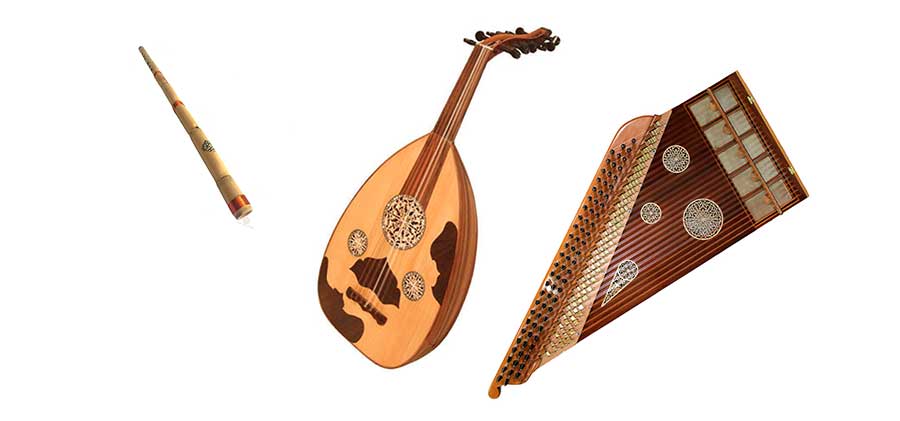Agora Open Air Museum
- 18 Nov - 24 Nov, 2017

Al-Kindi used musical notation, the system of writing music. They also named the notes of a musical scale with syllables instead of letters, called solmization. These syllables make up the basic scale in music today. The phonetic similarity between today’s scale and the Arabic alphabet used in the ninth century is striking.
About 70 years after Al-Kindi, Al-Farabi developed the rababah, an ancestor of the violin family, and qanun, a table zither. He wrote five books on music, but The Great Book of Music on the theory of music was his masterpiece. In the 12th century, it was translated into Hebrew, and then into Latin. The influence of Al-Farabi and his book continued up to the 16th century.
Roving musicians, merchants, and travellers, all helped Arabic music on its way into Europe, and this helped to shape the cultural and artistic life of Spain and Portugal under the 800 years of Muslim rule. One of the earliest examples of this is found in the collection of Cantigas de Santa Maria. Composed around 1252 upon the orders of Alfonso X el Sabio, king of Castilla and Aragon, this collection consists of 415 religious songs about the Virgin Mary.
Many individuals also played a part in the spreading of new music into Europe. Appreciable influence lies with one man, Ziryab, known as “the Blackbird” because of his melodious voice and dark complexion. He was a gifted pupil of a renowned Baghdad musician, but his talent and excellence in music slowly overtook his teacher’s, so the Umayyad caliph invited him to Andalusia.
Ziryab settled in the court of Cordoba in 822, which was under the Caliph Abd al-Rahman II, the son of the Umayyad caliph. Here, Ziryab found prosperity and recognition of his art, becoming the court entertainer with a monthly salary of 200 golden dinars in addition to many privileges.
His accomplishments are many, including establishing the world’s first conservatoire in Cordoba; teaching harmony and compositions; introducing the Arab lute (al-‘ud) to Europe and adding the fifth bass string to it; replacing the wooden plectrum with a quill feather from a vulture; and rearranging musical theory completely by setting free metrical and rhythmical parameters.
The Ottoman State was the first Euro-Asian state to have a permanent military musical band. Founded in 1299, the famous Mehterhane military band followed the sultan on his expeditions. It would arrive in the middle of battles to rouse the spirit of the soldiers while also terrifying the enemy. The Janissary, an elite army, also had a band of six to nine members with instruments like drums (zuma), clarinets, triangles, cymbals (zil) and kettle-drums of war (kos and naqqara). These were carried on the backs of camels.
European met the janissary bands in peace and war. On various ambassadorial receptions it became fashionable to have Ottoman-Turkish instruments in Europe. The Janissaries were defeated at the gates of Vienna in 1683 and left behind their musical instruments. This was an event that Napoleon Bonaparte’s French military bands were equipped with Ottoman war musical instruments such as zil and the kettledrums. It is said that Napoleon’s success in the battle of Austerlitz (1805) was due in part to the psychological impact of the noise of his fanfares.
COMMENTS